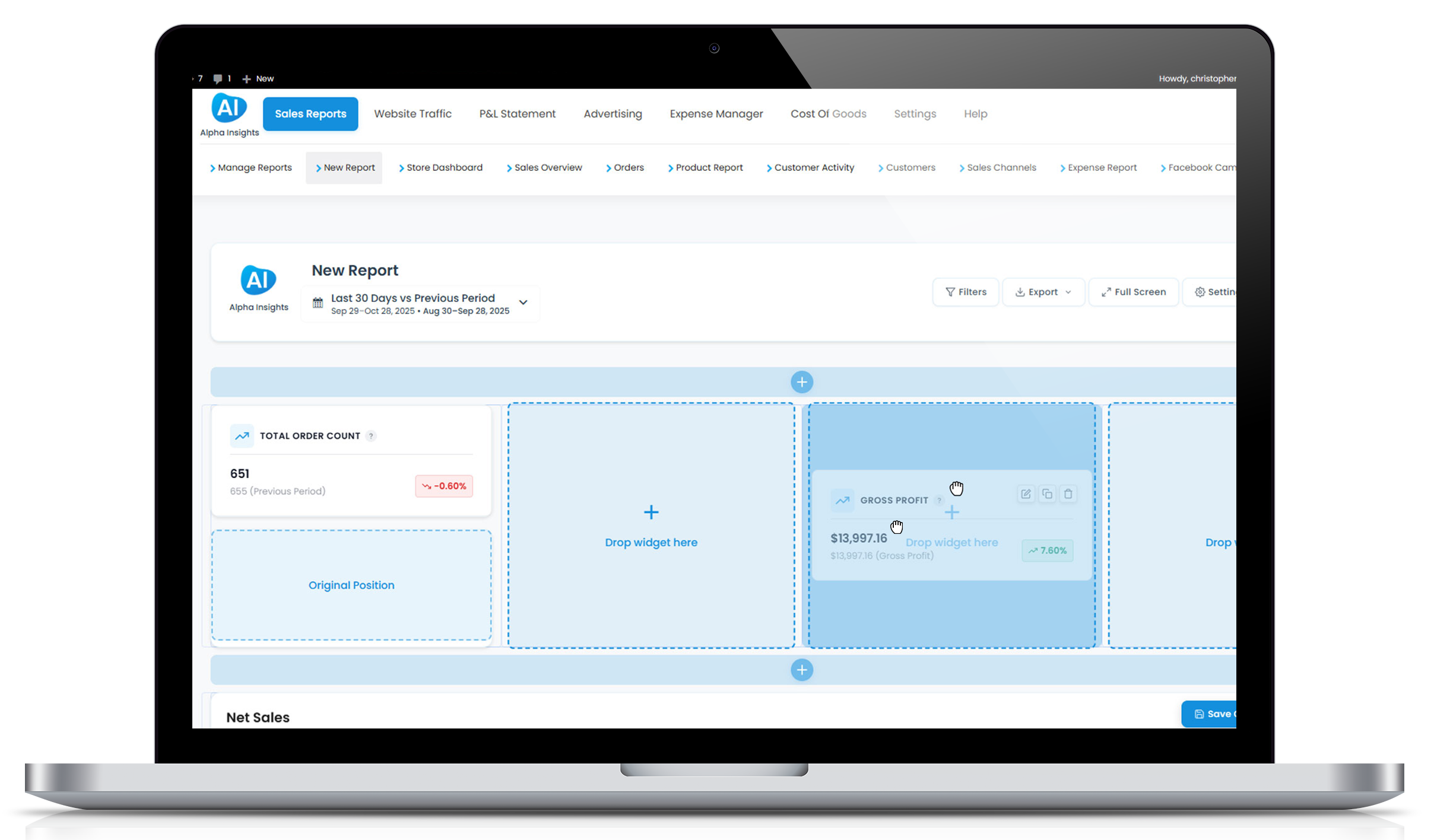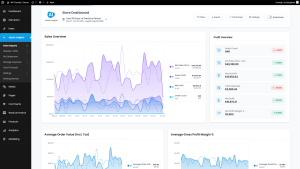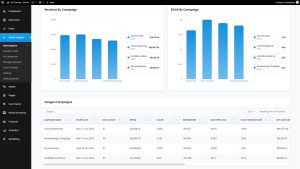How to Track Affiliate Sales and Their Impact on WooCommerce Profit
If there’s one channel that promises big reach without upfront ad spend, it’s affiliate marketing. You only pay when someone delivers a sale. Sounds like a dream, right?
But here’s the catch: tracking affiliate performance in WooCommerce often ends at “this person made X sales.” What you’re missing is the rest of the picture—how much profit those sales actually generate. Because not all sales are created equal, and if you aren’t measuring profit, your affiliate program could be costing more than it’s contributing.
So, let’s lift the curtain. In this article, we’ll show you how to accurately track affiliate sales in WooCommerce—and more importantly, how to calculate their real impact on your store’s profitability. And yep, we’ll also show you how Alpha Insights makes this kind of deep tracking way easier than trying to duct-tape spreadsheets and plugins together.
Why Tracking Affiliate Sales Isn’t Enough
Let’s say Affiliate A earns you $2,000 worth of sales this month. High-five! But how many of those sales came from 50% off coupons? What were the shipping costs? Did you factor in affiliate commission payments, product-level COGS, or transaction fees?
This is where basic affiliate tracking falls apart. You get quantity data (how many sales came from which affiliate), but almost zero clarity on what matters most: net profit.
Affiliate programs often overlook:
- Commission costs paid to affiliates
- Coupon stacking or discounts that lower the revenue
- Product costs and transaction fees
- Shipping subsidies or fulfillment expenses
- Refunds or returns per affiliate
Without incorporating these, affiliate revenue might look impressive on the surface but quietly erode your bottom line beneath it. In short: revenue is vanity—profit is truth.
The Components of Affiliate Profitability in WooCommerce
Before you can optimize or expand your affiliate program, you need to understand each moving part. Here’s what goes into calculating affiliate profitability:
1. Affiliate Revenue
This is the gross sales amount generated by that affiliate. It’s usually easy to track via affiliate plugins or networks. But keep in mind—it’s just the starting point.
2. Commission Payout
Most affiliates earn a % or flat fee on every referred sale. That’s money straight off the top before your profit. You’ll want to log this as a cost per sale.
3. Product Costs (COGS)
Your cost of goods sold is one of the largest overlooked metrics. Selling a $50 product that costs you $30 to produce gives you an entirely different view than assuming all revenue is profit.
4. WooCommerce Fees
Think: payment gateway fees, transaction add-ons, and subscription renewals if you’re running recurring products. These all eat into the affiliate-driven margin.
5. Shipping & Fulfillment
Even if you pass shipping fees to customers, there might be backend expenses like packaging, warehouse handling, or offsetting free shipping promos.
6. Refunds & Cancellations
Your perfect revenue report may crumble once refunds are factored in. If someone returns an order made through an affiliate, do they keep the commission? What’s your loss per return?
This is where things get messy. And it’s also where insights live.
By connecting these dots, you won’t just know who’s selling—you’ll understand who’s driving sustainable growth.
How to Track Affiliate Sales in WooCommerce (The Basics)
First, the foundational setup. You need a way to track which affiliate is responsible for each order. Thankfully, there are several WooCommerce-compatible affiliate management tools available:
- AffiliateWP
- YITH WooCommerce Affiliates
- SliceWP
- Post Affiliate Pro
These tools typically provide:
- Unique affiliate links
- Referral tracking (cookie or URL-based)
- Dashboard views of sales and commissions
- Payout calculation and logs
With these in place, you’ll know how much each affiliate is selling and what you owe them. But again—this is surface-level tracking. For profitability, you need more.
Take It Further with Data: Tracking Profit per Affiliate
This is where Alpha Insights shines. It fills the visibility gap between sales attribution and profit contribution.
Here’s how to track affiliate profitability with Alpha Insights:
1. Track Product-Level Profit
Alpha Insights lets you assign true product costs (like materials, packaging, supplier pricing) to each item in your store. When an affiliate-referred order comes in, it calculates the actual cost involved—revealing the true margin left after the sale.
2. Integrate Coupon Tracking
Did the affiliate encourage customers to use a 20% off code? Alpha Insights accounts for this and adjusts the total revenue accordingly. Your profit view isn’t distorted by inflated gross sales—what you see is what’s left in your pocket.
3. Calculate Commission Fees as Expenses
Most affiliate systems deduct commission from reports, but rarely present the cost in context of profit. Alpha Insights lets you input ongoing business expenses—including affiliate commissions—helping you compare CAC (customer acquisition cost) vs CLTV (customer lifetime value).
4. Monitor Refunds and Adjusted Profit
If any sales are canceled, refunded, or partially returned after payout, Alpha Insights adjusts your reports to reflect it. You’ll never mistakenly believe an affiliate made you $3,000 if $1,500 eventually came back as refunds.
Attribute Affiliate Sales to Customer Value—Not Just One-Time Revenue
There’s a hidden advantage to affiliate referrals that most WooCommerce stores aren’t tracking: lifetime value (LTV). Some affiliates may generate fewer sales upfront, but those customers stick around, make repeat purchases, and contribute more long-term.
Alpha Insights can help you:
- Track customer purchase behavior over time
- Segregate cohorts driven by specific affiliates
- Compare LTV across different traffic sources
- Highlight high-retention affiliates worth deeper investment
This adds nuance to affiliate performance. It’s not just “who sold more”—it’s “who sent customers with value”.
Common Affiliate Mistakes That Kill Profit (Without Realizing It)
Affiliate marketing can be one of your most effective channels—if you don’t inadvertently sabotage your profitability.
Watch out for these pitfalls:
- Too-generous commission structures: Paying 30% on $10 items might leave you underwater when costs are considered
- Coupon abuse: Overlapping coupons with high commission rates can wreck per-order economics
- Incentivizing volume over value: Affiliates pushing low-margin products just to earn more
- Ignoring churn & returns: Affiliates attracting fleeting, non-loyal buyers with high refund rates
Data doesn’t lie—track it from day one. If you want to clean up your program, make smarter commission decisions, or reward the right partners, you need visibility first—and Alpha Insights delivers that in real time.
How to Evaluate and Optimize Affiliate ROI
Ok, so how do you decide which affiliates to scale and which to sunset? Numbers guide the way.
Here’s what to break down per affiliate:
- Total revenue generated over a set period
- Total affiliate commission paid
- Product costs (COGS x items sold)
- Shipping or fulfillment costs
- Refund/cancellation rate
- Net profit from that affiliate (revenue – all these costs)
- Average order value (AOV) per affiliate-referred customer
- Customer LTV from referred users
Once this data is layered together, you’ll quickly find:
- Which affiliates truly scale profitably
- Which drive high refunds, poor margins, or short-term value only
- Where to increase commission or bonus structures to reward success
Alpha Insights helps tie all this together by making profit attribution seamless. You don’t have to stitch together reports from WooCommerce, affiliate plugins, and cost spreadsheets—it’s visualized in one dashboard.
Final Thoughts: Reward the Affiliates That Grow Your Bottom Line
In WooCommerce, sales are easy to track—but profit is where your business sustains itself. Affiliate marketing is only “performance-based” if you track the right performance.
You need to know:
- Who your best-performing affiliates are—not by volume, but by margin
- Which products generate profitable affiliate sales
- How campaigns, coupons, and commissions combine to affect net profit
- Where your affiliate dollars are best spent based on truth, not assumptions
Don’t fly blind with your affiliate program. Use your data, sharpen your strategy, and reward partners that bring real value—not just clicks.
To make tracking it all effortless, start using Alpha Insights for WooCommerce and turn your affiliate channel into one of your most powerful (and profitable) growth machines.





